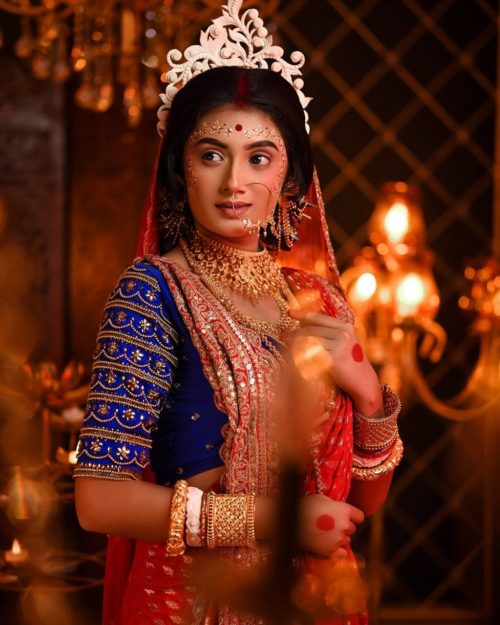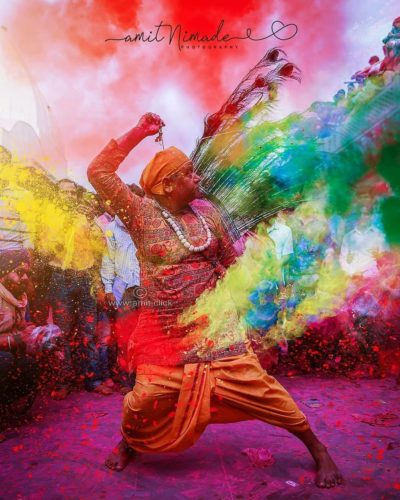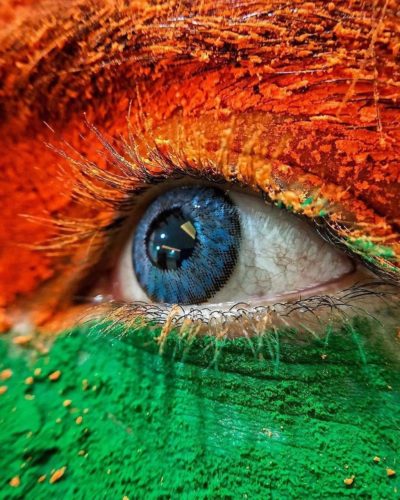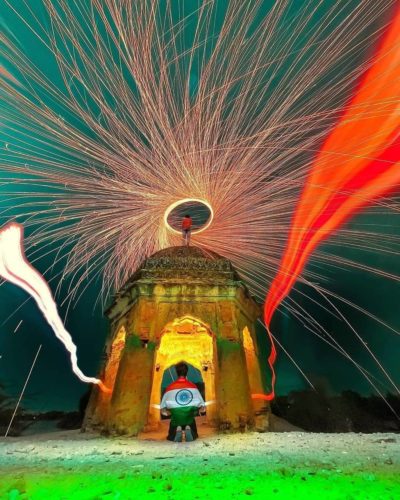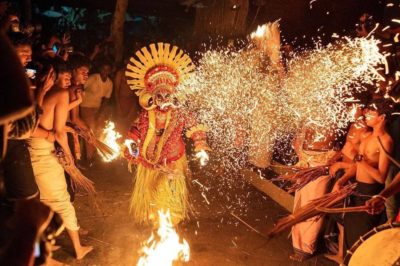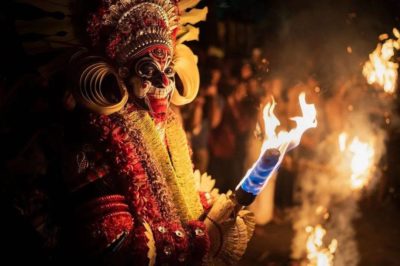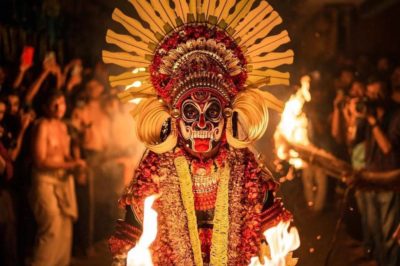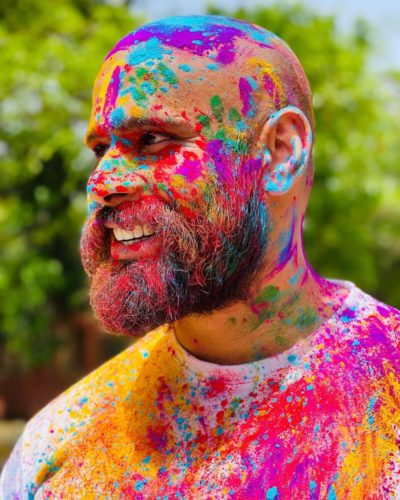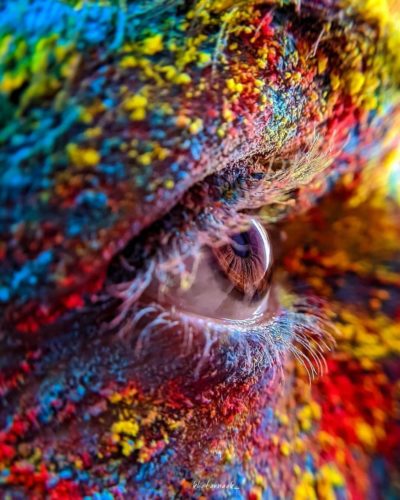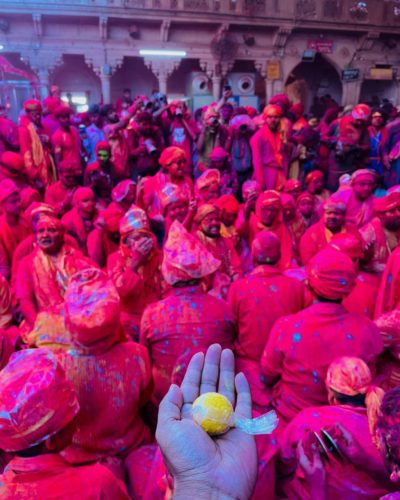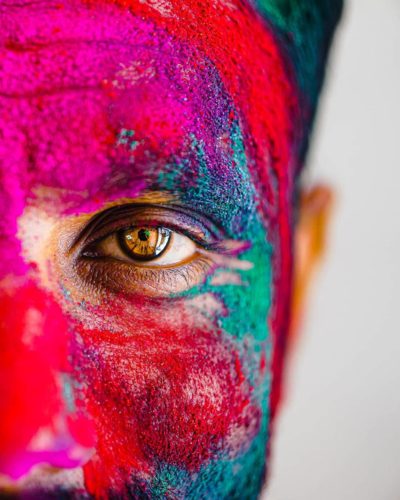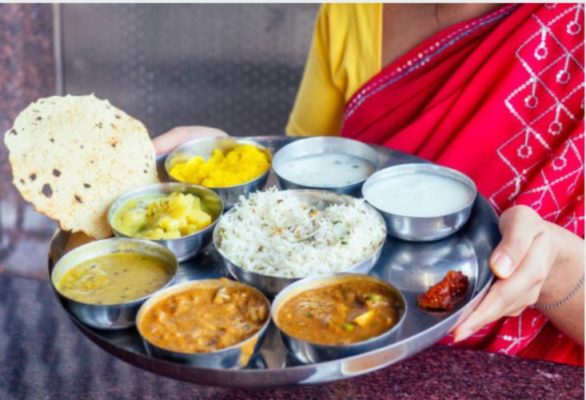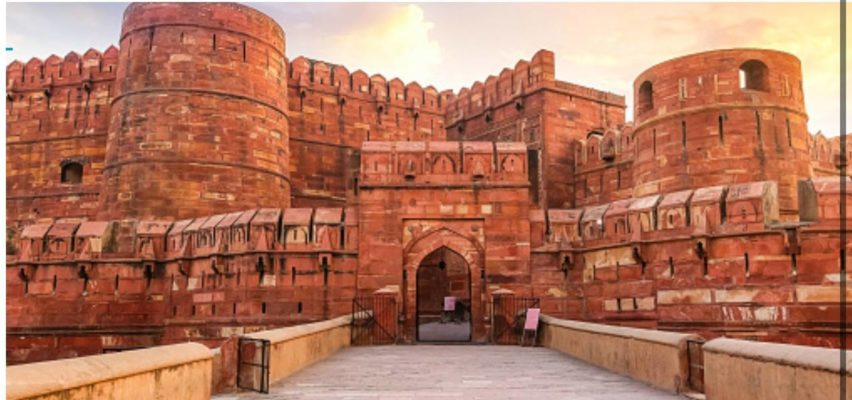HOLIDAY INDIA
India is considered a multinational and multicultural country, in which various holidays are celebrated and dozens of festivals are organized in a year.
Most often, tourists like to come for Diwali – the main Indian and Hindu holiday.
The festival of Diwali is the most significant in Hinduism and Sikhism and Jainism, close to it in terms of spiritual content. Diwali is celebrated as the “Festival of Lights” and symbolizes the victory of good over evil, and candles and lanterns are lit everywhere to mark this victory.
History of Diwali holiday:
The tradition of celebrating Diwali is directly associated with the return home from enemy captivity of the legendary king Rama. In order for Rama and his wife to reach home safely, people lit oil lamps. They were called actions and were filled with Indian ghee. In Hinduism, melted ghee plays an important role in the organization of sacrificial ceremonies.
Another version connects the Diwali holiday with the defeat of the demon king Narakasura, who sowed chaos in ancient Indian society. The evil character was tamed by Krishna. The burning of an effigy of Narakasura by modern Indians on a holiday is one of the references to ancient mythology.
In many parts of India, the holiday commemorates Lakshmi, the goddess of abundance and prosperity, wife of the god Vishnu. According to legends, she appeared in white clothes from the waters of the milky ocean, in which in time immemorial gods and demons were looking for the elixir of immortality amrit. In Eastern India, on the contrary, the black goddess of power, Kali, is honored. Characteristically, water motifs are associated with it. After worship and prayers, the images of the goddess Kali are lowered into the water bodies.
Diwali in 2024 falls on November 1. But the festive events will last 5 days – from October 29 to November 3.
Mahashivaratri is a Hindu holiday in honor of the god Shiva. This is a transitional holiday, it falls on the night before the new moon of the last lunar cycle of winter, falls on February-March. The holiday “Shivaratri” is celebrated several times a year, but it is considered the most important, which is why it carries the prefix “mahu” – big, the main thing.
Mahashivratri is very significant for people who follow the spiritual path. It is also very important for people who respect family values and for people who have certain ambitions. Family people celebrate Mahashivratri as Shiva’s wedding anniversary. Ambitious people consider it the day when Shiva defeated all his enemies.
Meaning of Shivratri day
Light is a brief event that occurs in your mind. Light is a brief event that occurs in your mind. Light is not eternal, it is always a limited possibility because it happens and ends. The greatest source of light we know of on this planet is the Sun. But even the light of the Sun can be stopped with a hand and cast away the shadow consisting of darkness. Darkness is all-encompassing, it is everywhere. Immature minds have always called darkness the devil. But when you describe the divine as all-pervading, you obviously mean the divine as darkness, for only darkness is all-pervading. She is everywhere. It does not need any feeding.
Light always comes from a source that burns itself out. It has a beginning and an end. Light always comes from a finite source. Darkness has no source. It is itself a source. It is all-pervading, ubiquitous, omnipresent. Therefore, when we say Shiva, we mean this vast emptiness of existence. It was in the womb of this vast void that all Creation took place. It is this womb of emptiness that we call Shiva.
Date: March 8, 2024
Holi is one of the brightest and most unique festivals on earth. During this Hindu festival, people celebrate the victory of good over evil and the arrival of spring.
The very word “holi” comes from the name of the Hindu demon Holika. This holiday is also called the festival of colors. This name, in turn, comes from the god Krishna, an incarnation of the Hindu deity Vishnu, who liked to organize games for village children using paints and water.
It is a unique and very fun festival, during which traditional ceremonies and rituals are held in the temples, and vibrant parties with guest DJs are organized in the cities.
March 25, 2024.
Tour route:
Tour to India for Holi 2024
Hotels 4*, half board, entrance tickets included
Delhi (1 night) – Jaipur (3 nights) – Amber Fort – Abaneri – Fatehpur Sikri – Agra (2 nights) – Vrindavan- 1 day – Delhi.
7 days from , 1000 dollars
Tour program:
Day 1/2. Arrival in Delhi
(Terminal-3), meeting with a company representative. A traditional Indian greeting awaits you. Transfer and hotel accommodation. Short rest.
Breakfast at the hotel.
Departure for a sightseeing tour of Delhi.
Delhi is the capital of modern India. Many dynasties flourished here for 3000 years of existence. Their legacy still lives on in many monuments, from the 13th century mausoleum of the Kings of Lodi to British Empire buildings such as the Parliament Buildings or the Presidential Palace. The program includes a tour of the Gate of India, the Presidential Palace and the Government Building (from the side), the Lotus Temple and the Qutb Minaret. The Lotus Temple (closed on Mondays) is one of the most amazing temples in India. Built in the shape of a lotus flower, it is the largest and most beautiful Baha’i temple and serves as a symbol for followers of the faith around the world. Another cult place is the 72-meter minaret Qutub Minar, built in the 12th – 14th centuries, decorated with calligraphy and a symbol of Muslim rule in Delhi.
Jaipur is the legendary “Pink City”, the capital of Rajasthan. Maharaja Jai Singh II built it yellow, but in the middle of the 19th century, in honor of the arrival of Prince Albert of England, all the buildings were repainted in pink, the traditional color of hospitality. Jaipur will give you a lot of pleasant moments if you walk along the stone pink streets, touch the shine of the developing silk saris, walk through the courtyards past the narrow doors decorated with swastikas, which bring goodness and luck to the Indian home. Arrival at the hotel, accommodation, night at the hotel.
Day 3. Jaipur – Amber Fort.
Breakfast at the hotel.
Excursion to Amber Fort (Amber Fort). Amber Fort is located 11 km north of Jaipur. It was there, in the Aravalli Hills, that the ancient capital of the state of Jaipur once stood. The construction of the magnificent fort-palace was started in 1592 by Maharajah Man Singh. The fort is a grand complex of palaces, pavilions, gardens and temples. A whimsical palace-fortress of honey color rises above all this. You will be able to experience the magic of the bygone era by climbing to the top of the fort on the backs of elephants. Musicians will delight your ears on the way. From the top, the maharaja’s apartments offer a striking view of the narrow gorge.
In the afternoon – a tour of the city with a visit to the unique Jantar Mantar observatory, a magnificent structure built by Raja Jai Singh in 1728, which houses the world’s largest sundial, the City Palace in the museums of which you can see wonderful collections of Mughal costumes and paintings. Exterior view of Hawa Mahal (Palace of Winds). This five-story pink stone building, decorated with columns and balconies, was built in 1799. The whimsical relief of the palace with a thousand latticed windows on the carved facade is considered a symbol of Jaipur.
Jaipur is famous for its textiles and is also the main jewelery center of India, and it is no coincidence that it is also where the annual International Gem and Jewelery Exhibition takes place. You can appreciate the sophistication of local precious products by visiting a jewelry workshop. You will also visit a textile factory, where you will be entertained by the magical art of Indian printing on fabrics. Here, women will be able to try on a real Indian saree, and gentlemen will be able to try on traditional Indian clothing – a kurta.
Lakshmi Narayana Temple, also known as Birla Mandir, is a modern architectural marvel. The majestic temple is located at the foot of the Moti Dungri hill in Jaipur. Built entirely of high-quality white marble, the temple is framed by carved sculptures and statues of gods. It is dedicated to Goddess Lakshmi and Lord Narayan.
The temple’s three main baths provide a clear picture of secular India, depicting different approaches to the nation’s various religions. The temple has several beautifully crafted statues of Ganesh and other Hindu Gods. Along with statues of Gods, you can also find statues of great thinkers and philosophers such as Buddha and Socrates.
Night at the hotel.
Day 4 . Jaipur.
Breakfast at the hotel.
Free time.
Departure to Shahpur Haveli for Holi (dress uniform is white “Kurta and Pajama”).
Holi is a festival of spring, filled with sunlight and the cheerful frenzy of nature in full bloom. Obviously, he is older than the legends that explain his origin today. It has many elements of primitive orgies in honor of deities and forces of fertility, elements close to the holidays of various peoples of the world. There are several legends associated with the origin of Holi. According to one of them, the name Holi comes from the name of the demon Holika. Prahlada, the son of an evil king, worshiped Vishnu and nothing could convince him of this. Then the king’s sister, the demoness Holika, who was believed not to burn in fire, persuaded Prahlada to climb into the fire in the name of God. To everyone’s surprise, Holika burned, and Prahlada, saved by Vishnu, came out unscathed. In memory of these events, on the eve of the Holi holiday, an effigy of the evil Holika is burned.
The Slavs will be happy to learn that this is an oil festival. In addition, the holiday of Holi is associated with the story of how Shiva burned Kama, the god of love, with his third eye, who tried to bring him out of meditation, after which Kama remained incorporeal. But at the request of Shiva’s wife Parvati and Kama’s wife Goddess Rati, Shiva returned Kama’s body for 3 months in a year. When Kama finds the body, everything around blossoms and happy people celebrate the most joyful love festival. The festival of Holi is also often associated with the name of Krishna and his games with cowherd women, which were reflected in the earthly world.
The courtship of a young man and a girl during Holi is a favorite theme for dance. A young man lures a girl, distracts her, she stares at something, and at that moment he smears her with colored powder or pours tinted water over her. The girl is offended, he apologizes (a characteristic gesture – grabs the earlobes). She forgives him and also pours colored water on him in return. A rare opportunity for young people in the general harshness of Indian temperament. The sweetest tradition of celebrating Holi is to sprinkle each other with colored paints in the form of powder, most often red, less often yellow or green, and pour colored water over them. Bubbles with paints fly in the Hall even into the windows of passing cars. A few days before the holiday, bags with powdered paint appear on sale in almost all shops and stores. This is one of the few Hindu holidays when people try not to wear their best clothes – on the contrary, they dress more simply, since any outfit, even the most festive one, runs the risk of being hopelessly ruined by paint stains.
Return to the hotel, overnight at the hotel.
Day 5. Jaipur – Abaneri – Fatehpur Sikri – Agra
Breakfast at the hotel. Departure to Agra. On the way to visit Abaneri. Acquaintance with the step well – Chand Baori built in the 7th century. The appearance of the Chand Baori well is surprising – similar wells were generally built only in India, so similar architecture can be seen only here, and Chand Baori is also the deepest well of this type. This amazing structure, consisting of thousands of steps leading down to the water, and it is very difficult to believe that this entire huge and ingenious structure is only a well, designed to fulfill one and only purpose, to give water to people. You will see the Temple of Harshit Mata (Goddess of Happiness) with medieval Indian architecture, and you will also get to the “dead city” of Fatehpur Sikri. Fatehpur Sikri – a city built in a desert place from red sandstone by Emperor Akbar, is only a reflection of a glorious past. It was the capital of the Great Mughals for a very short time, after which the inhabitants left it due to lack of water. Perhaps, thanks to this very circumstance, we can see it today in its original beauty.
Arrival in Agra.
Accommodation at the hotel, dinner at the Agra hotel.
Day 6
Breakfast at the hotel.
Excursion to Agra, a majestic city, the capital of the Great Mughal Empire. Agra still attracts beauty seekers from all over the world, enjoy the unforgettable Taj Mahal. The Taj Mahal was built by the great Mughal emperor Shah Jahan in memory of his beloved wife Mumtaz. The palace was built by 20,000 craftsmen over 22 years. A thousand elephants carried white marble to the building. Merchants from Tibet, Persia and Russia sent gems to decorate it. The floral ornament of jasper, agate and malachite, opal and obsidian, and mother-of-pearl, skillfully inscribed in the perfect symmetry of the white palace, leaves a feeling of lightness and weightlessness. Next, a trip to Agra Fort, built as an army fortress in 1565. by Emperor Akbar. Here, Shah Jahan spent the last years of his life in prison, treacherously devoted to his son, admiring the white Taj Mahal from the window of his room. The huge walls of the fort hide magnificent architectural structures – masterpieces of Indian and Muslim masters. In the afternoon, visit Itimad-ud-Daula – a small elegant park tomb of Itimad-ud-Daula, the treasury of emperors, was built by his daughter Nur-Jahan, the beloved wife of Emperor Jahangir. Construction began in 1622 and lasted six years. The tomb combines white marble, colored mosaics, stone inlays and grills. In terms of style, this is the most innovative Mughal construction of the 15th century, which bears the features of the transition from the massive red sandstone buildings of the Akbar era to the sensually refined buildings of Shah Jahan’s time (Taj Mahal). After a rich excursion program, you can visit the marble workshop, where pieces of furniture and souvenirs are made from marble inlaid with semi-precious stones. This is a unique opportunity to observe the work of masters whose skills have been passed down from generation to generation for centuries. Return to the hotel. Overnight and dinner at the Agra hotel.
Day 7 Agra – Vrindavan – Delhi
Breakfast at the hotel.
Going on an excursion. An overview of the grand monument of Mughal architecture – the tomb of Emperor Akbar in Sikandra. This place logically completes the acquaintance with the empire of the great Mughals in the person of its most famous and most effective representative. Then departure to Delhi, on the way visiting the city of Vrindavan, which is called “the city of five thousand temples”. Vrindavan is a holy place of pilgrimage for followers of Vaishnavism, associated with the birth and childhood of Lord Krishna (temples are closed between 12.00 and 16.00). Visiting the spiritual complex Prem Mandir and the Temple of the Society of Krishna Consciousness.
Arrival in Delhi. Visit Bangla Sahib (time permitting) a famous Sikh gurudwara (temple) known for its association with the eighth Sikh Guru – Guru Har Krishan. Inside the complex is a large pond known as “Sarovar”, the waters of which are considered sacred by Sikhs and known as “amrita”. The Gurdwara was built by the Sikh general Sardar Bhagel Singh in 1783, along with nine other Sikh temples built during the reign of Mughal Emperor Shah Alam.
After the excursion program, dinner at a restaurant near the airport.
Transfer to Delhi airport.
Hotel accommodation is not provided.
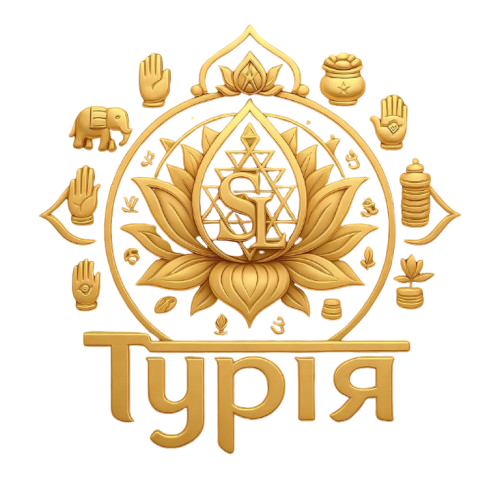

 Українська
Українська Русский
Русский